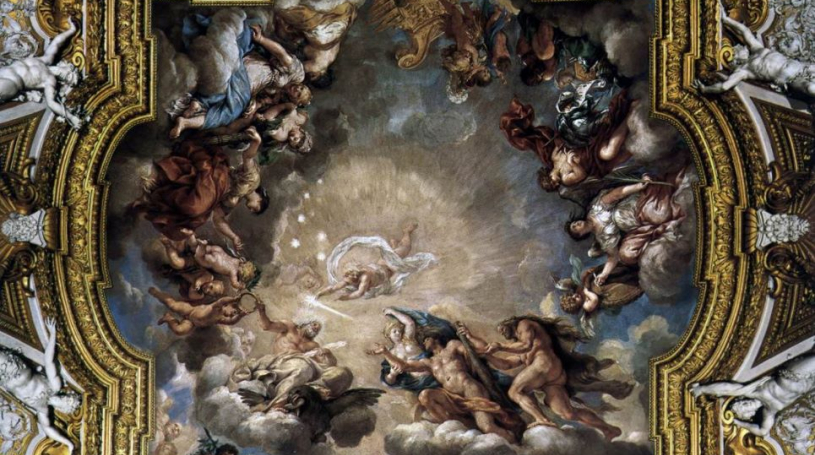Did you know this? - The Sala di Giove (Hall of Jupiter)
The Sala di Giove (Hall of Jupiter) is one of the most magnificent of all rooms in the Palazzo Pitti, Florence. In the Medici period, this room was used as an Audience Chamber or Throne Room. The richly decorated area is full of frescoes, white and gilt stucco works and plumes decorated with shells. It enhances the public role of this area and represents the crowing artistic achievement of Pietro da Cortona, who has dotted it with extraordinarily detailed inventions. The finished work is the result of his direction, starting with the many preparatory designs - many of which are preserved in the Collection of Prints and Drawings at the Uffizi Galleries - through to the direct coordination of the workers on scaffolding: painters, gilders, masons and stucco artists.
This room was completed as soon as Pietro da Cortona finished the Venus Room (1644-1646). The subject of the ceiling is Jove crowning the young sovereign. The decoration of this room is the most perfect of all the Rooms of the Planets. The fresco on the ceiling is one of extraordinary luminosity and ethereal transparency, and this is more obvious now after the restoration of 1999. The female figures who accompany the king of the gods and the smiling putti remind us of Correggio.
The theme chosen here, Jupiter crowning the prince, to whom Hercules has consigned his club, highlights the commanding role of the Medici dynasty and legitimises the young heir’s ascent to Grand Duke, completing the educational journey shown in the previous rooms, and evoked in the frescoed lunettes that show the many gods of Olympus - Minerva, Apollo, Mercury, and Mars - who accompanied and supported him in this ideal education, from adolescence to old age. The victorious prince thus disembarks from the ship of the Argonauts, followed by Victory, who is engraving the letter M (Medici) on her shield; he is met by Jupiter, surrounded by four female characters, probably allegorical depictions, and a tribute by the iconographer to the Medicea Sidera, the four satellites of the planet Jupiter, discovered by Galileo Galilei and announced in his Sidereus Nuncius, dedicated to Cosimo II de’ Medici in 1610.








